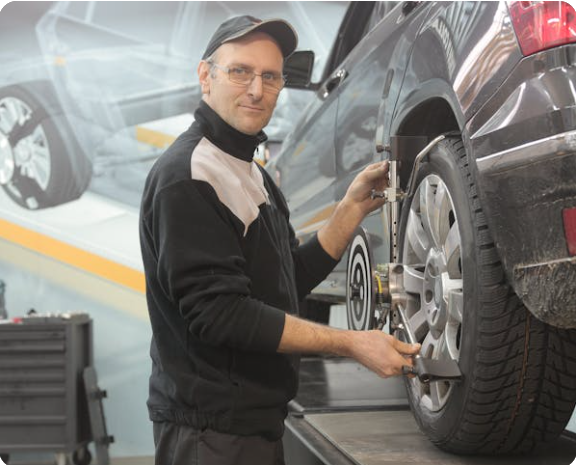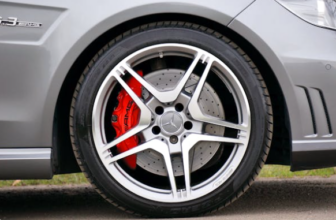
When it comes to vehicle safety, performance, and comfort, tires are easily among the most crucial components—yet they’re often overlooked. Whether you’re a first-time car owner or a seasoned driver, selecting the right tire can feel overwhelming due to the wide variety of options available. This guide will walk you through the fundamental aspects of choosing the right tire for your vehicle, helping you make an informed decision that balances safety, efficiency, and budget.
1. Why Tires Matter More Than You Think
Tires are the only part of your vehicle that actually touches the road, and they significantly influence your car’s:
- Traction and grip
- Fuel efficiency
- Ride comfort
- Braking performance
- Handling and steering response
- Road noise and vibration
A poor choice in tires can lead to safety hazards, reduced fuel economy, and even premature wear and tear on your car’s suspension.
2. Know Your Driving Conditions
Before even looking at tire brands or prices, assess how and where you drive. Different environments require different tire features. Here are a few questions to consider:
- Do you mostly drive in a city, highway, or off-road?
- What’s the climate like where you live?
- Do you encounter snow, heavy rain, or extreme heat?
- Do you drive aggressively or prefer a smoother ride?
Matching the tire to your typical driving condition is key to maximizing its effectiveness.
Example:
If you live in an area that sees snow for several months of the year, all-season tires might not be sufficient. A dedicated set of winter tires could dramatically improve traction and safety.
3. Understanding Tire Types
Tires are categorized by performance, terrain, and seasonality. Here’s a breakdown of common types:
a. All-Season Tires
- Most popular for general-purpose driving.
- Provide balanced performance in wet and dry conditions.
- Not ideal for heavy snow or extreme performance.
b. Summer Tires
- Optimized for dry and wet roads in warm climates.
- Superior grip and handling in summer.
- Become hard and lose traction in cold temperatures.
c. Winter/Snow Tires
- Made from rubber compounds that remain soft in freezing temperatures.
- Deep tread patterns for better snow and ice traction.
- Should be swapped out after winter for best performance.
d. Performance Tires
- Designed for sporty vehicles and high-speed driving.
- Enhanced grip and handling.
- Typically wear out faster and cost more.
e. Touring Tires
- Focused on comfort and long-distance driving.
- Quieter ride with decent handling and good longevity.
f. All-Terrain and Mud Tires
- Built for off-road enthusiasts.
- Aggressive tread patterns for rocky, muddy, or uneven terrain.
- Not ideal for smooth or quiet highway rides.
4. Reading a Tire Sidewall: What All Those Numbers Mean
When shopping for tires, you’ll encounter a combination of numbers and letters printed on the sidewall like this:
Example: P215/65R16 95H
Let’s decode it:
- P = Passenger vehicle tire (LT = Light Truck)
- 215 = Width in millimeters
- 65 = Aspect ratio (height of the sidewall as a percentage of width)
- R = Radial construction
- 16 = Diameter of the wheel in inches
- 95 = Load index (how much weight the tire can carry)
- H = Speed rating (maximum speed capacity)
Speed Ratings (Common Examples):
- T = Up to 118 mph
- H = Up to 130 mph
- V = Up to 149 mph
- W/Y/Z = Higher performance vehicles
Always consult your owner’s manual or the sticker inside the driver’s door for the manufacturer-recommended tire specifications.
5. Tread Life and Wear Ratings
Another key aspect to look at is the UTQG (Uniform Tire Quality Grading) rating system, which includes:
- Treadwear (higher number = longer life)
- Traction (grades from AA to C)
- Temperature (grades from A to C)
Example:
A tire with a UTQG rating of 600 A A means:
- Treadwear is 6x better than the control tire used in testing.
- Traction grade A (excellent grip).
- Temperature grade A (handles high speeds without overheating).
Note: Treadwear ratings are not universal across brands, so compare within the same brand for accuracy.
6. Size Matters: Always Match or Upgrade Responsibly
While you can upgrade to different wheel or tire sizes, you need to do it responsibly to maintain safety and handling. Larger wheels can look better and may offer better performance, but they can also reduce ride comfort and fuel economy.
Plus Sizing:
- Refers to increasing wheel diameter while decreasing sidewall height to maintain overall diameter.
- Must be done carefully to avoid speedometer errors and suspension stress.
7. Budget vs Premium Tires: What’s the Difference?
You’ll often hear the phrase: “You get what you pay for”—and with tires, it’s often true.
Budget Tires:
- Cheaper upfront cost.
- Often noisier and have less grip in extreme conditions.
- Shorter lifespan.
Premium Tires:
- Better performance, quieter ride, improved fuel economy.
- Longer-lasting with better warranties.
- More consistent in wet or emergency situations.
That said, there are mid-range tires that offer great value. Don’t just buy the most expensive or the cheapest—do your research and match the tire to your needs.
8. Check Reviews and Ratings
Before buying, always check:
- Consumer reviews
- Tire test comparisons
- Manufacturer warranties
- Mileage guarantees
Websites like Tire Rack, Discount Tire, and major auto forums offer user-generated reviews that highlight real-world performance.
9. The Importance of Proper Installation and Maintenance
Even the best tire won’t help if it’s improperly installed or neglected. After you choose your tire, make sure you:
- Have them professionally mounted and balanced
- Get a wheel alignment if needed
- Regularly rotate your tires (every 5,000–8,000 miles)
- Check tire pressure monthly
- Inspect for wear and damage
Proper maintenance can extend the life of your tires by thousands of miles.
10. When Should You Replace Your Tires?
General rule: replace tires every 6 years, or sooner if:
- Tread depth falls below 2/32″
- You notice cracks, bulges, or sidewall damage
- Vibration increases
- Tires are unevenly worn
Use a tread depth gauge or the “penny test”—insert a penny into the tread with Lincoln’s head down. If you see all of his head, it’s time for new tires.
Final Thoughts
Choosing the right tires doesn’t have to be a mystery. Start by understanding your driving needs, learn how to read tire specifications, and do some research on brands and reviews. A good set of tires tailored to your car and lifestyle can drastically improve your driving experience, fuel economy, and most importantly—your safety.
Stay tuned for the next post in this tire series:
👉 Blog 2: Seasonal Tire Guide – Summer vs Winter vs All-Season Tires


